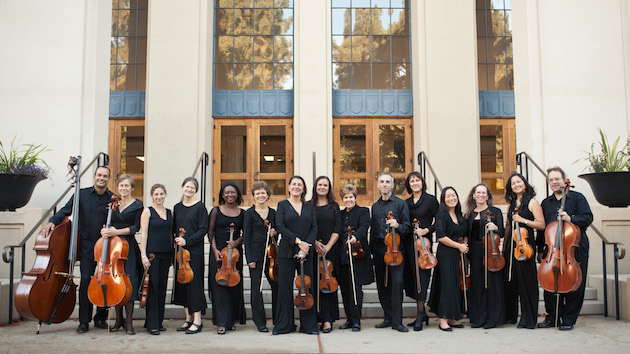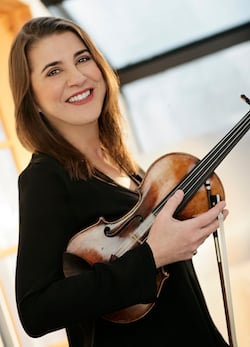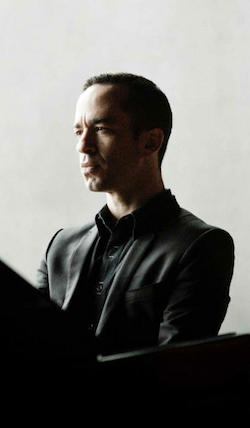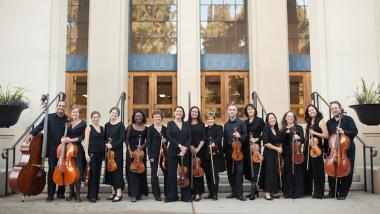
It’s newsworthy when any classical ensemble lives to celebrate its 25th birthday — but it’s a particularly impressive accomplishment for New Century Chamber Orchestra. The group’s budget doesn’t compare to those of larger institutions — and there’s far less repertoire for string orchestra than there is for symphony or opera. With so many years of music-making under its belt, New Century has had to get creative about programming.

One solution is to commission new works. Indeed, under Music Director and concertmaster Nadja Salerno-Sonnenberg, now in her final season, the orchestra has generated works by composers including William Bolcom, Mark O’Connor, and Derek Bermel. Another solution is to play arrangements of existing pieces — which, depending on both the quality of transcription as well as the nature of the source material, can create mixed results.
Unfortunately, the arrangement of Webern’s early work Langsamer Satz on the September 16 “Silver Season Opener” program at Herbst Theatre (which also featured the Israeli pianist Inon Barnatan) was one of these less successful ventures. It’s hard to imagine New Century giving a more balanced or in-tune performance — but the core premise of transforming this utterly romantic quartet into an orchestral piece is deeply flawed.
With augmented forces, Webern’s spontaneous and passionate solo passages are diluted, each player having to curtail her expressivity to avoid sticking out. Blending, of course, is integral to ensemble playing, but in Friday’s performance, section players so completely disappeared into the principal players’ sounds that the overall aesthetic was only blurry. And the accompanying lines that, in a quartet setting, could be played more like melodies, here had to simply be soft. New Century’s performance was significantly stronger than it was last season in Schubert’s Death and the Maiden, an arrangement plagued by similar problems. But it would be much more rewarding to hear Langsamer Satz played by a quartet, and to hear New Century play a work for string orchestra.

Much better in arrangement was Mozart’s Piano Concerto No. 13 in C Major, K. 415. Though it lacked the winds, brass, and timpani indicated in Mozart’s score, nothing was musically lacking about this performance with Inon Barnatan: The chamber setting ideally suited the piece’s sunny nature.
“Pleasing to the ear, and natural, without being vapid,” is how Mozart once described the work, which rarely deviates from the mild. Mozart had initially envisioned a contrasting slow movement in the stern key of C minor, but, in the end, replaced it with a sweet aria in F major. And from his first entrance, Barnatan’s fluid and elegant playing let Mozart’s music sing. In the first movement, he played up the humorous appoggiatura figures without being hammy, and he imbued the second movement’s melodies with a natural sensitivity. In the third movement’s jarring diversions to C minor — salvaged fragments of that abandoned slow movement — he seemed to draw new depths out of the piano.
The other major work on the program was Philip Glass’s Symphony No. 3, written for the Stuttgart Chamber Orchestra of 19 players. Glass treats each musician, to a certain extent, as a soloist, and from the individual level to the group as a whole, this was a stellar performance — New Century at its best.
The musicians phrased the first movement’s offbeats and meter changes, so typical of Glass, with unique finesse. Toward the end of the movement, the lower voices’ pizzicato lines were gentle, yet magnificently resonant. The challenging, Britten-esque unison passages in the second movement were flawless, and this tight energy later carried the brief, compositionally inconsequential fourth movement.
In the third movement — the crux of the work — a soaring violin solo travels from the concertmaster down to each player in the section, transforming in character as the placid underlying texture gradually becomes seething with material. It’s masterful writing, and the individuals of the New Century Chamber Orchestra shone on this milestone birthday concert.

